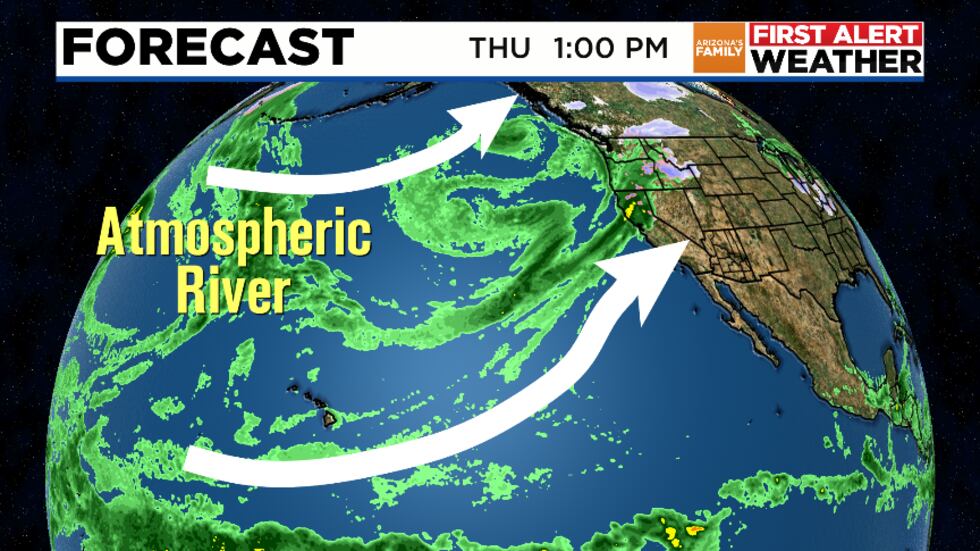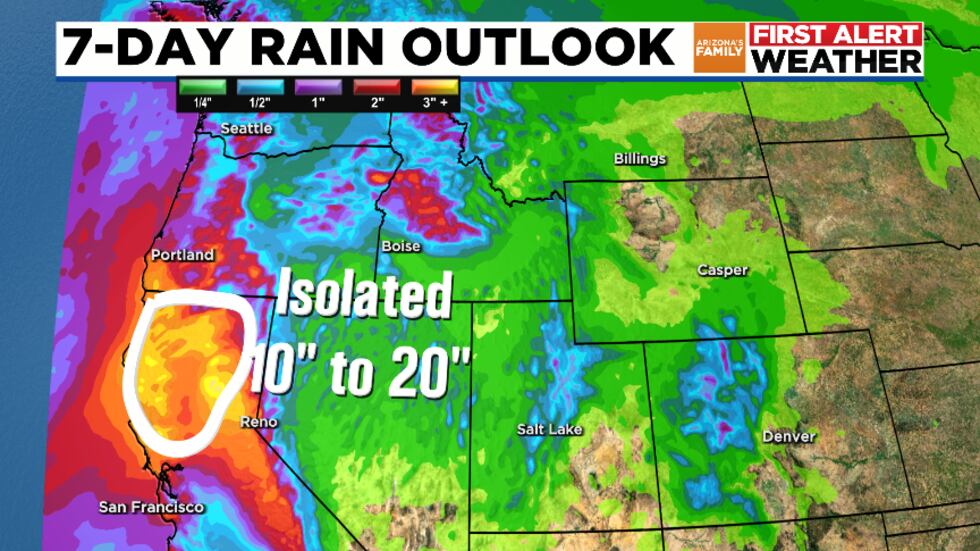What makes a storm a ‘bomb cyclone?’
PHOENIX (AZFamily) — You may have heard the term 'Bomb Cyclone' used this week as a powerful storm hit parts of the West Coast. So, what exactly is a bomb cyclone?
The more technical term for a ‘bomb cyclone’ is a process called bombogenesis, which is related to the central low-pressure center in a storm.
For a storm to qualify as a bomb cyclone, NOAA states it must be “at 60 degrees latitude, is a drop of at least 24 millibars (24 hectopascals) over 24 hours.”
For ‘bomb cyclones’, you often hear about approaching the northwest coast, so you can generally use the “drop of at least 24 mb in 24 hours” rule.

The pressure of the bomb cyclone hitting the northwest this week can be estimated using a range of data sources. Some estimates show that at one point, the storm’s central pressure dropped from 1000 mb (millibar pressure) to 942 mb in 24 hours—a drop of 58 mb in 24 hours!
Why does it matter when the pressure drops so quickly?
Generally, the faster the pressure falls in a storm, the stronger it is. This means strong winds and heavy precipitation!
While the worst winds might be winding down on Wednesday, an “atmospheric river” will be aimed at the northern west coast for a good part of this week. NOAA defines an atmospheric river as “long, concentrated regions in the atmosphere that transport moist air from the tropics to higher latitudes.”

In the case of the storm this week, the atmospheric river is pulling moisture from the tropical Pacific Ocean and targeting the northwest and central part of the US West Coast.
Over the next seven days, some locations in northern California may receive between 10 and 15 inches of rainfall, with a few localized amounts potentially between 15 and 20 inches.
For the Sierra Nevada and Klamath Mountains, some of the higher elevations could receive 1 to 3 feet of snow.
See a spelling or grammatical error in our story? Please click here to report it.
Do you have a photo or video of a breaking news story? Send it to us here with a brief description.
Copyright 2024 KTVK/KPHO. All rights reserved.









